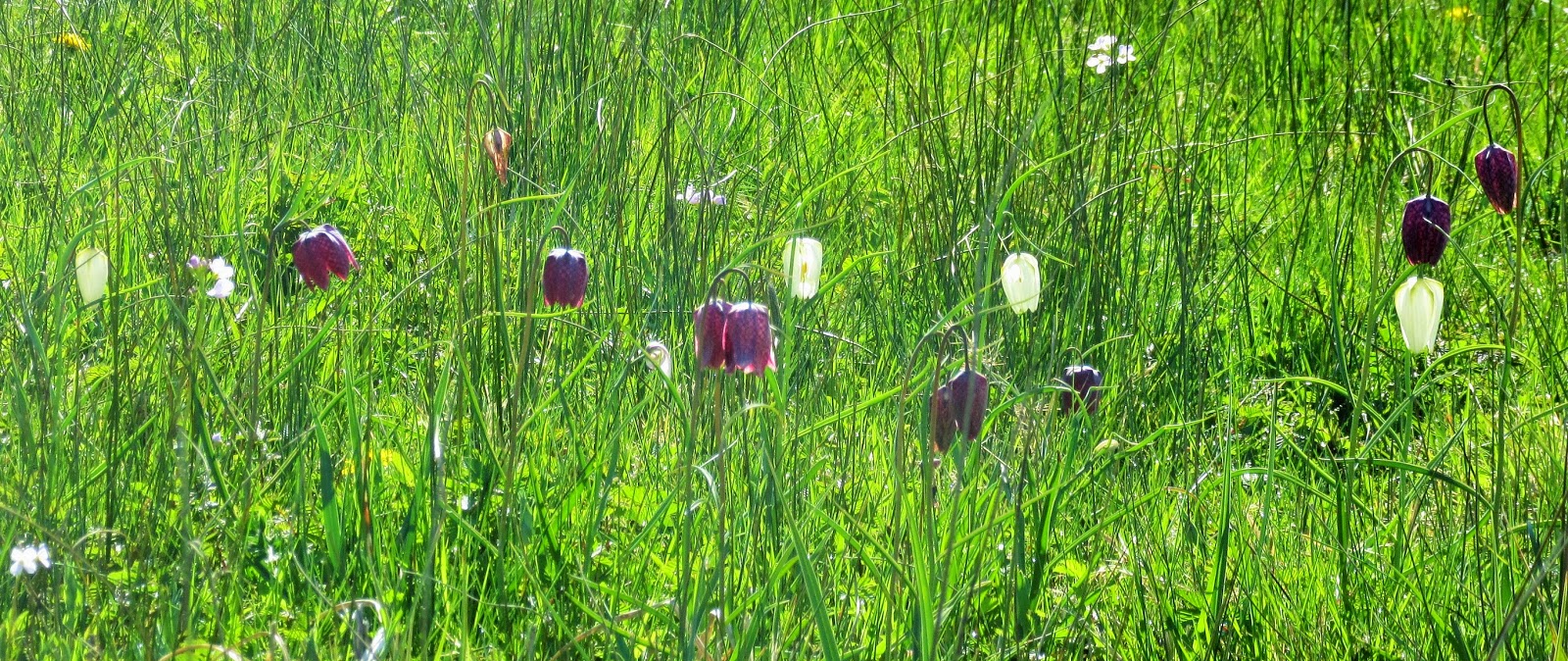Turns out we weren't disappointed!
To start with the setting is beautiful. You walk down the tow path of the river Thames, then enter the nature reserve, where fields full of fritillaries stretch out in front of you. They stand just above the grasses and other wild flowers, so you can easily spot their purple chequered heads, bent over on long delicate stems.
 |
| Once upon a time this is would have been a common site in our countryside! |
Most are purple, but there were some white fritillaries in the mix, as well as some light pink ones that look like a cross between the purple and white ones.
 |
| Purple, pink and white fritillaries |
Snakes-head fritillaries are the county flower of Oxfordshire and Iffley Meadows are one of the best places to see them in the country. They are, sadly, a very rare site these days.
 |
| They all hang their heads down, so I couldn't resist taking a peek from underneath |
 |
The fields were full of other wildflowers including lady's smock (cuckoo flower) and marsh marigold (or hobble gobble, as my Mum calls it). Later in the year there'll be lots of other flowers, including vetch, meadowsweet and meadow-rue.
 |
| Lady's smock |
 |
| Marsh marigold or hobble gobble |
 |
| Reed beds |
 |
| The River Thames |

That's brilliant! Such a pretty flower. I love the 'scales' on the petals, so different to any other flower. Have you got any other plant targets in mind during the next few months?
ReplyDeleteThanks! Orchids, orchids and a few more orchids!!
ReplyDelete